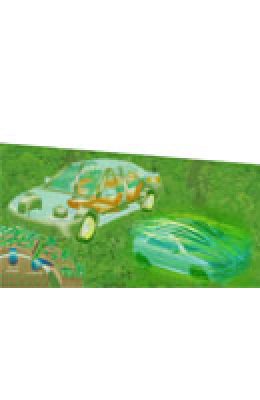The PSA Peugeot Citröen collaboration goal is to build an automatic
classification and quantification system to detect the defects on the metal
panels as consequence of the stamping process. Currently, this classification
is done the direct observation of the pieces. The final goal is to obtain
a classification that is similar, as much as possible, to the one obtained
by demerit.
The complete process starts in the image adquisition from the metal panels and leads to the defect classification.

Our work is organized as follows:
– Step 1: Study of the objective and possibilities analysis
– Step 2: Construction of a software to analysis
pictures
– Step 3 Validation of the software?s performance
o In terms of localization and determination of the geometrical
parameters
o In terms of capability to organize detected defaults in a hierarchy and define a criterium of quality.
– Step 4: Semi industrial validation (test with a large
range of parts)
– Step 5: Industrial unfurl
– Step 6: Production use
The PSA Peugeot Citröen collaboration goal is to build an automatic
classification and quantification system to detect the defects on the metal
panels as consequence of the stamping process. Currently, this classification
is done the direct observation of the pieces. The final goal is to obtain
a classification that is similar, as much as possible, to the one obtained
by demerit.
The complete process starts in the image adquisition from the metal panels and leads to the defect classification.

Our work is organized as follows:
– Step 1: Study of the objective and possibilities analysis
– Step 2: Construction of a software to analysis
pictures
– Step 3 Validation of the software?s performance
o In terms of localization and determination of the geometrical
parameters
o In terms of capability to organize detected defaults in a hierarchy and define a criterium of quality.
– Step 4: Semi industrial validation (test with a large
range of parts)
– Step 5: Industrial unfurl
– Step 6: Production use

